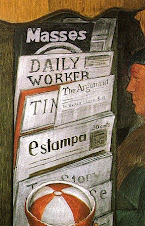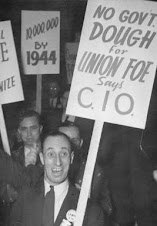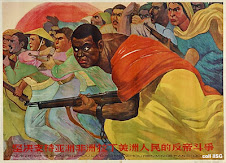By Caleb T. Maupin
Published Sep 17, 2010 10:46 PM
The Central Intelligence Agency, a ruthless enforcer of Wall Street’s drive for profits, publishes “The World Factbook.” It gives updated statistics for every country, some of which measure quality of life and societal health, such as life expectancy, infant mortality, literacy, unemployment and industrial production. In this series, Workers World examines some surprising conclusions, all using the CIA’s own statistics. Even though these statistics often understate gains compared to United Nations figures, they can’t help but show that countries benefit by breaking with imperialism.
India and China were both impoverished countries at the end of World War II. In both India and China, foreign corporations dominated the economy. In both countries there was mass starvation and poverty. In both countries there was extreme repression of women and various ethnic minorities.
After World War II, both countries had mass movements. However, their outcome was very different.
In 1947, India was granted formal independence from the United Kingdom and re-organized as a “Federal Republic,” a political transformation that changed the governmental structures but left the capitalist economic system intact. Modern India has been hailed as a “model” of neoliberal capitalism.
The Chinese Revolution of 1949, two years after India’s independence, was totally different, however. It was a socialist revolution led by the Communist Party. Not only did China’s government drastically change, but so did its economic and social system. The Chinese government, unlike the government of India, massively redistributed land, built up powerful collectively owned industries, combated sexism and racism, and built a People’s Republic based on the ideology of “Marxism-Leninism-Mao Zedong Thought.”
A comparison of life today in these two large countries, even according to CIA figures, shows that the socialist road of China, as opposed to the capitalist road of India, has been much more prosperous for the population at large.
The infant mortality rate of China is 20.25 per 1,000 live births. The infant mortality rate of India is 50.5 per 1,000 live births, more than double that of China. The life expectancy of the average person in India is 66 years of age. The life expectancy of the average person in China is 73. The CIA shows that literacy in China is at 91.6 percent, while it is only 61 percent in India.
Worse, in India the literacy rate for women is only 47 percent, meaning that less than half of India’s women can read. The literacy rate for women in China is 87 percent, less than 10 points behind men.
The CIA reports that the percentage of people living below the poverty line in China is 2 percent, while it is 25 percent in India.
When comparing the “free market” neoliberalism embraced by India with China’s economy, which today incorporates some capitalist measures but is built on the back of the 1949 socialist revolution, it is clear which system is superior. Even the CIA cannot hide this fact.
Articles copyright 1995-2010 Workers World. Verbatim copying and distribution of this entire article is permitted in any medium without royalty provided this notice is preserved.
Subscribe to:
Post Comments (Atom)










































No comments:
Post a Comment